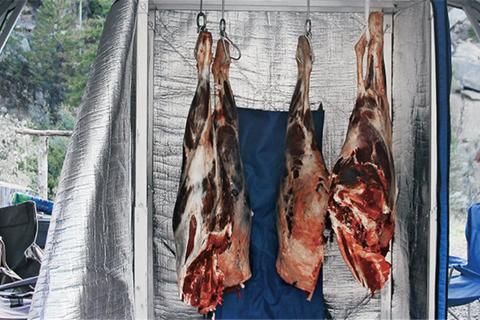
An Age-Old Question About Aging Meat
Arguments abound on both sides of the aging question with most of the debate centering around personal opinion and experience. Science tries to settle this disagreement and resides on the side of aging meat whenever possible. As meat ages, enzymes break down muscle fibers, enhancing tenderness and bringing out a more complex flavor profile.
Most times when we think about aging meat, we think of dry aging – a process that requires meat to openly hang in a cool, controlled environment. This process produces the most depth of flavor, but encourages dehydration which decreases your overall yield.
Wet aging, on the other hand, refers to putting meat on ice or sealing it in air-tight bags and keeping them in a controlled, cool environment. This process maximizes yield as the meat doesn’t dehydrate, but that means the flavor isn’t as impacted.
While science favors aging meat, the jury is still out on the best method for completing this task. Take some time this year for hands-on experiments to help you discover which method best suits your tastebuds. Then you can join the argument with your own opinion and personal experience. And no matter what you do, make sure you do it safely. There’s a fine line between aging and destroying.
- 1092 views

